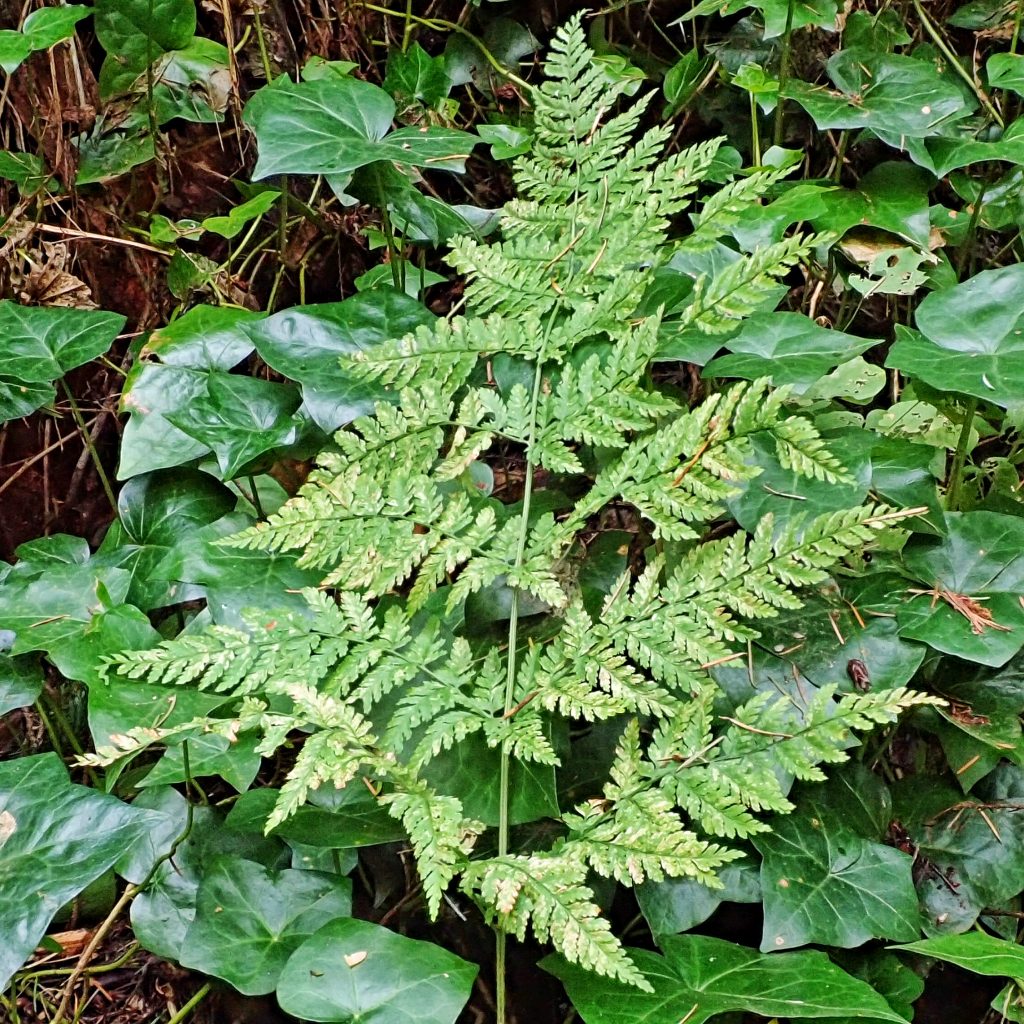
This is part 2 of my 3 part series on large, pinnate ferns commonly found in proximity to each other from the Cascades west, and in the montane parts of our region. Dryopteris expansa can be found in older works under the names D. dilatata and its synonym D. austriaca, but both names have proven to only be applicable to the very similar, strictly European species, which is allotetraploid (having 4 sets of chromosomes), as opposed to the diploid D. expansa. Our species has accumulated several common names, including spreading wood fern, northern wood fern, spiny wood fern, and shield fern.
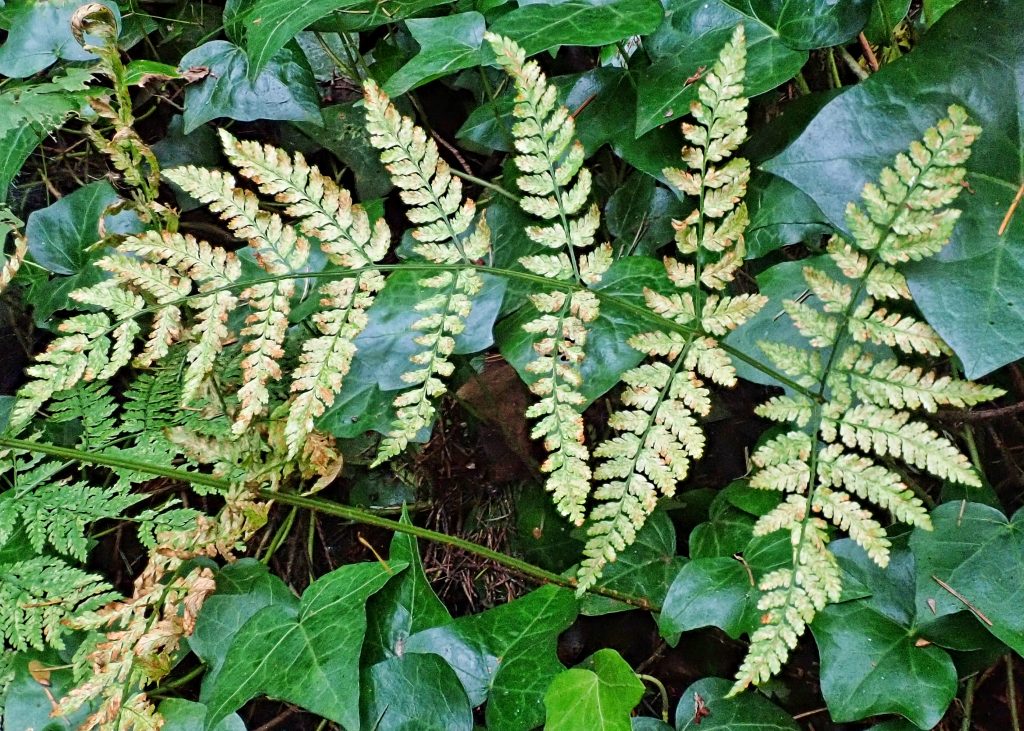
Dryopteris expansa is large (though smaller than Bracken Fern or Lady Fern) and robust, has pinnules (leaflets; a nice illustration of fern terminology can be found here) that are irregularly and jaggedly toothed, is thrice pinnate, has blades that are triangular in shape with a long, exposed stalk, and on the lowest pinnae the top pinnules nearest the stalk are much shorter than the pinnules below. This characteristic is easy to find, and is diagnostic against other Dryopteris spp., as well as Lady Ferns and Bracken Ferns. Pteridium aquilinum (Bracken Ferns) are also usually thrice pinnate, with a long exposed stalk, but they have pinnules that are either smooth or minutely toothed on the margins. Athyrium filix-femina (Lady Fern) also has large irregular teeth on the pinnules, but the blade is diamond shaped, with the longest pinnae in the middle of the blade, and shorter ones toward the base and the tip, and usually less than 10% of the stalk is exposed at the base. They are also usually twice pinnate, although I’ve seen some that were thrice pinnate.
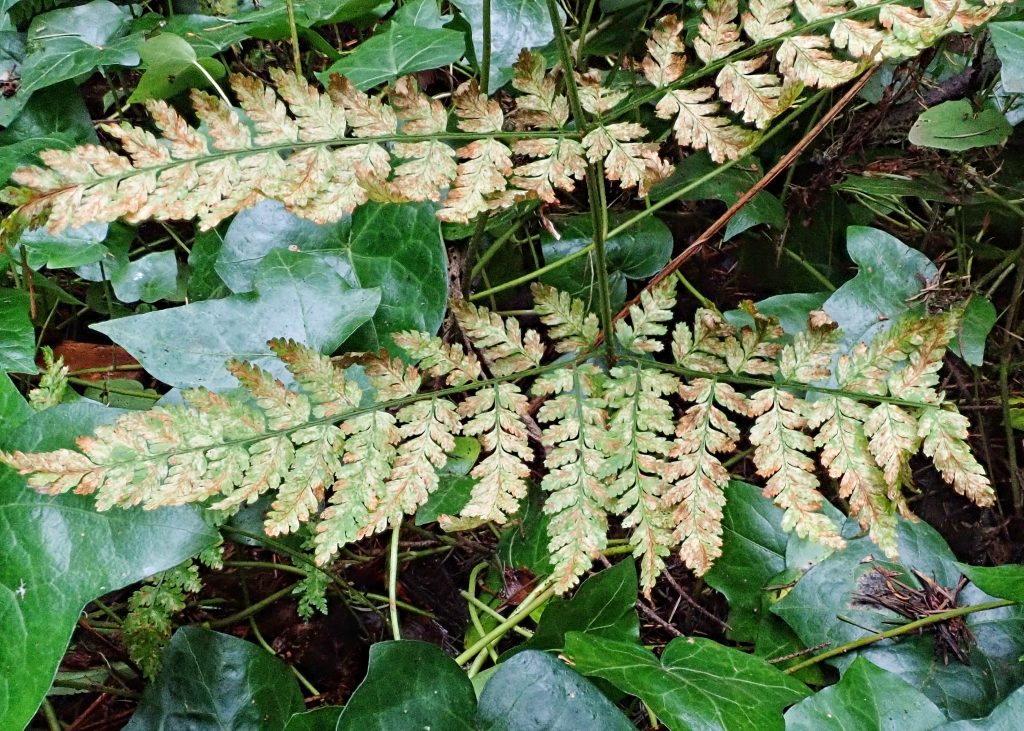
The fiddleheads of Dryopteris expansa have often been used as food, but they also do contain thiaminase, which can be a real problem because it depletes B complex vitamins in the body, although that enzyme is destroyed by cooking or thorough drying, and most indigenous peoples ate them in soup or boiled them before eating them with fish and seal oil. The rhizomes (roots) of this fern were the part most commonly used for food. They are high in starch and indigenous peoples used them as they did those of the Lady Fern, by boiling and peeling them as a vegetable, or roasted and ground for flour. The roots are best harvested in early autumn. They will be clothed in scales, and if the scales are round and light colored, as opposed to flat and dark, the roots will be good for eating. The roots were also ground into a powder for a wound poultice, and an infusion of the roots was used as a dandruff shampoo. Indigenous peoples also used the fronds to pack fish in, to prevent them drying out, and some tribes made pillows from the pinnae.
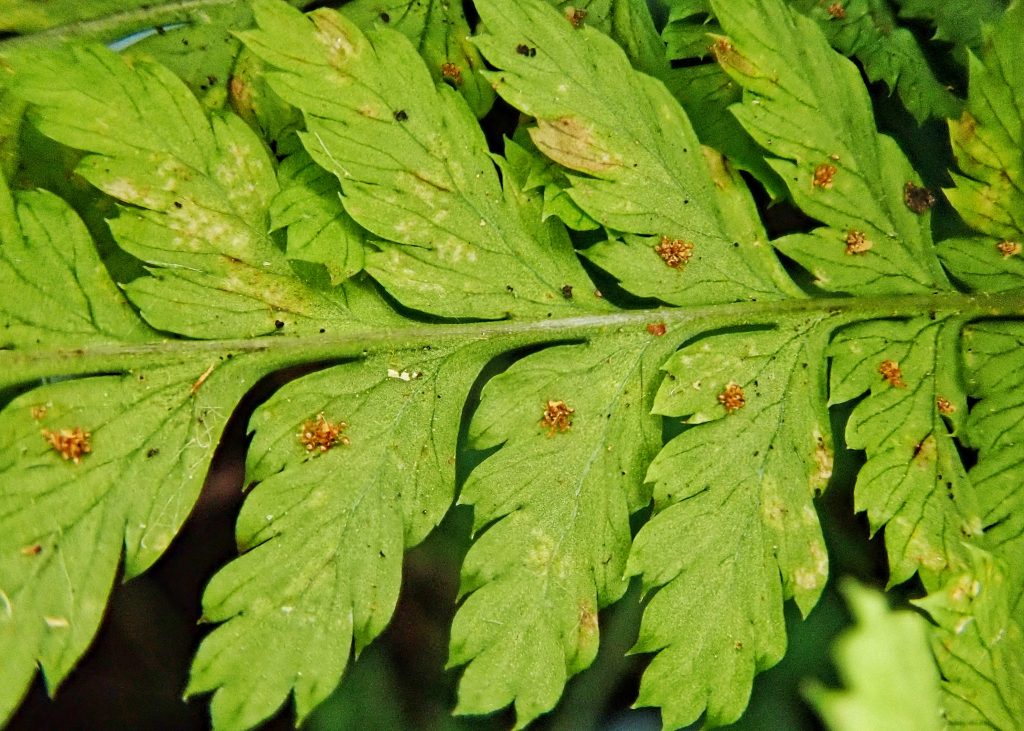
Description-Large (fronds up to 3’ long), medium dark green fern with a long exposed stem, triangular blade, and asymmetric pinnules near the stem on the lowest pinnae; grows in erect to spreading clusters; exposed stem with brown scales, especially heavy near the base; sori round, partly covered by round indusium; although it is deciduous the fronds often persist until well into the winter.
Similar species-See above
Habitat-Moist to mesic woodlands, forests, forest openings, damp meadows, and stream and road banks; often found on decomposing logs and stumps.
Range-Holarctic (northern Northern Hemisphere); found region wide in the PNW, except absent from shrub steppe.
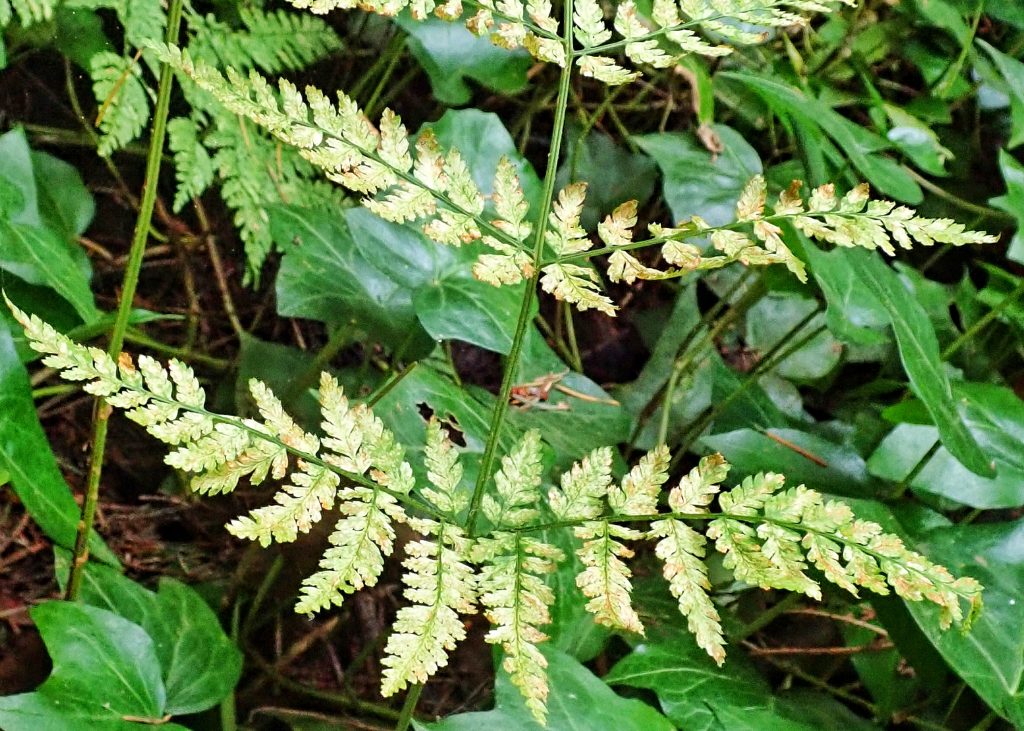
Reproductive timing– Spores released from August through October; Dryopteris spp. in general rely heavily on auxiliary buds formed on rhizomes to produce new plants.
Eaten by-Larval host for the moth Argyrotaenia franciscana; Mountain Goats and Blue Grouse occasionally feed on the fiddleheads; it is probable that some woodlice, springtails, millipedes, slugs, and snails feed upon the spores.
Etymology of names–Dryopteris is from the Greek words for ‘tree fern’, which possibly refers to the classic conifer shape of these ferns, but may reference the fact that they are commonly found in woodlands and forests, which is where they get their common name of wood ferns. The specific epithet expansa is from the Latin word for ‘expanded’, but what this references is obscure, though it may be another reference to its form.
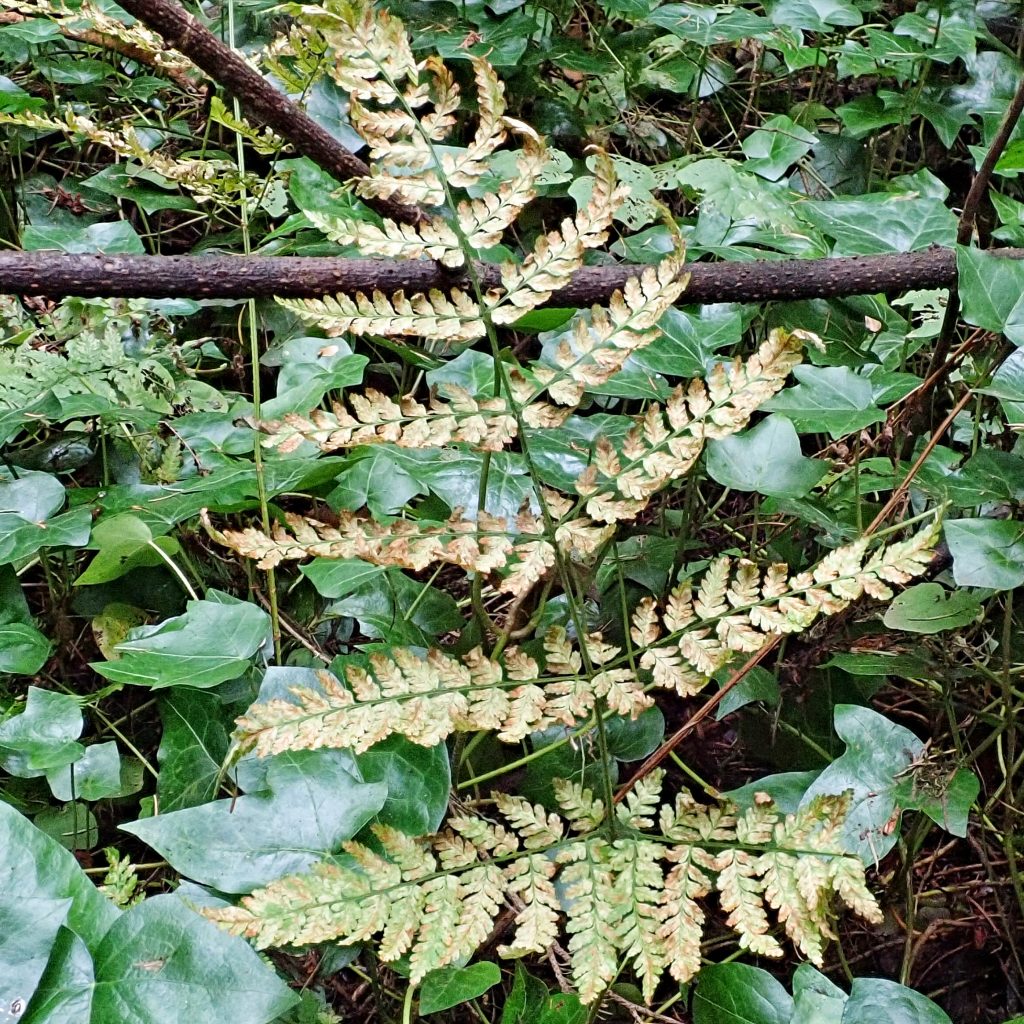
http://nativeplantspnw.com/spreading-wood-fern-dryopteris-expansa/
http://www.efloras.org/florataxon.aspx?flora_id=1&taxon_id=200004420
https://www.fs.fed.us/database/feis/plants/fern/dryspp/all.html
https://pfaf.org/user/Plant.aspx?LatinName=Dryopteris+expansa
https://www.fs.usda.gov/Internet/FSE_DOCUMENTS/fsm91_054138.pdf
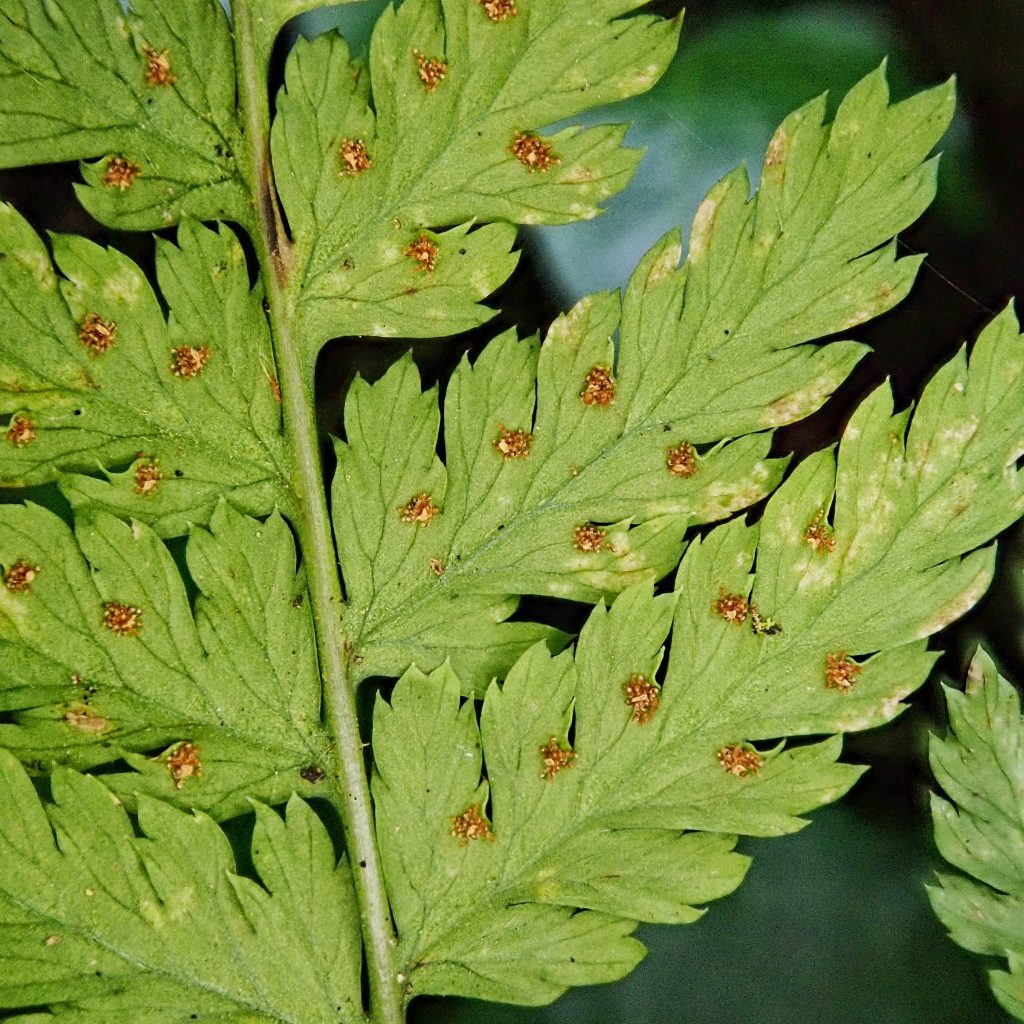
2 thoughts on “Dryopteris expansa”